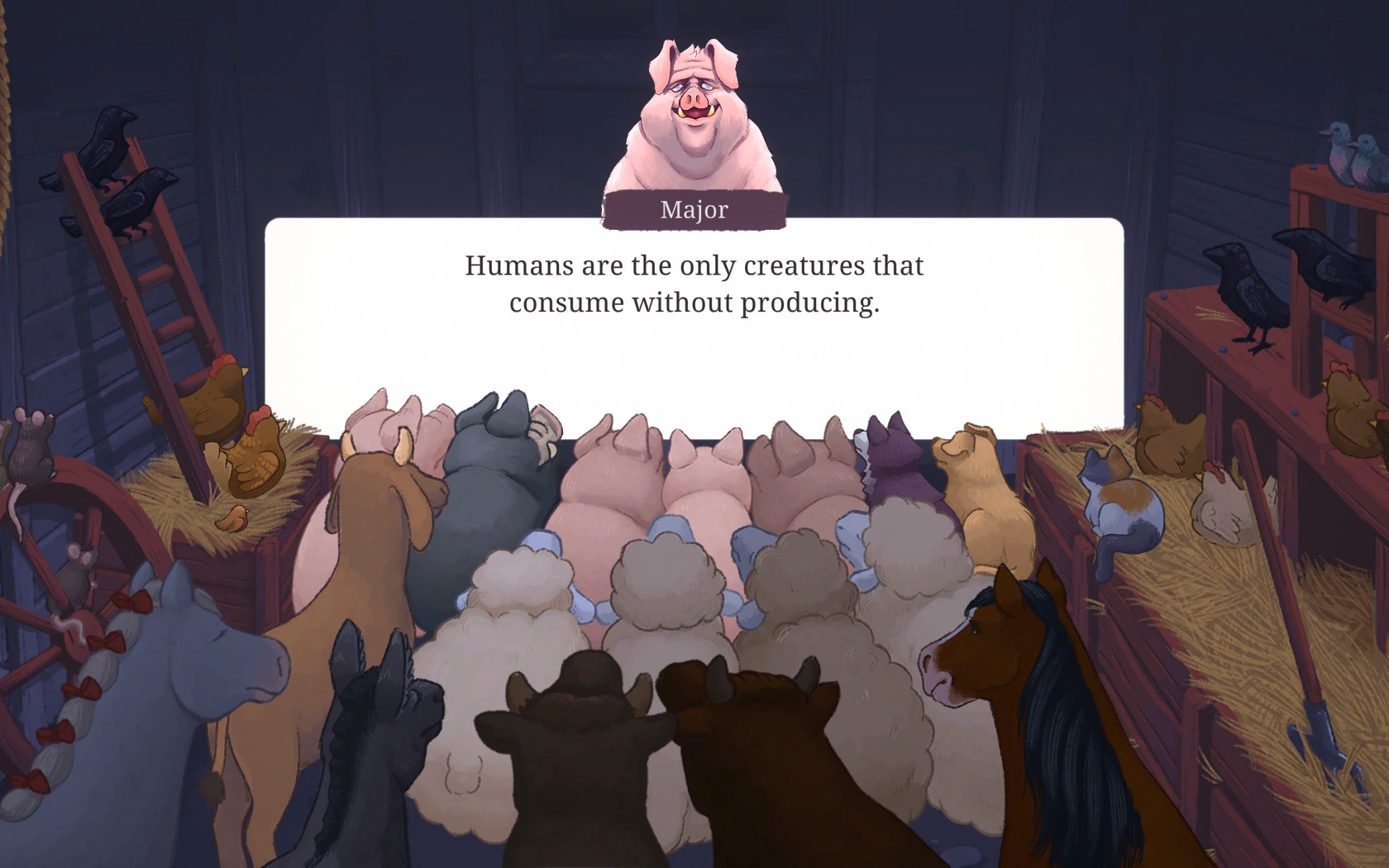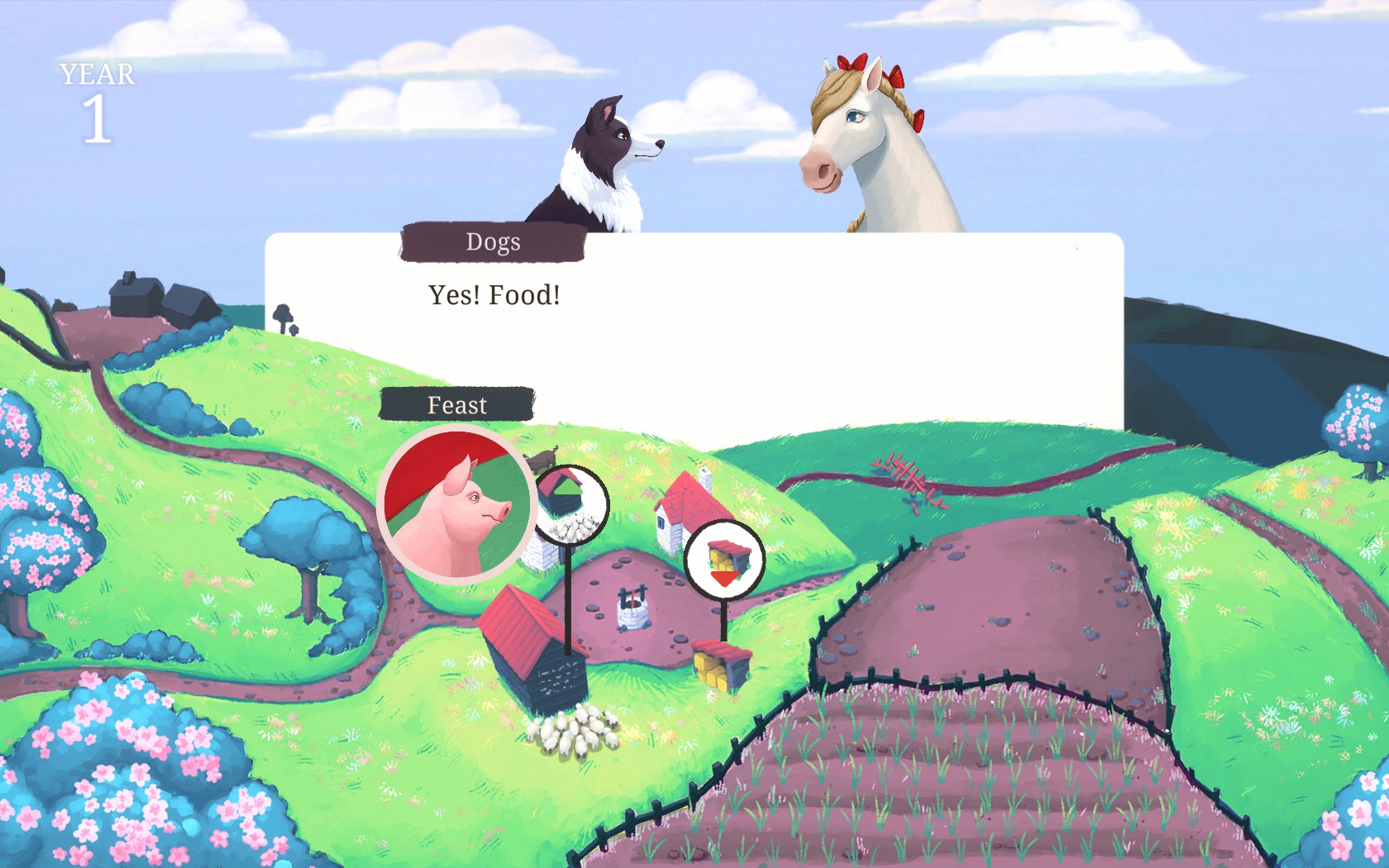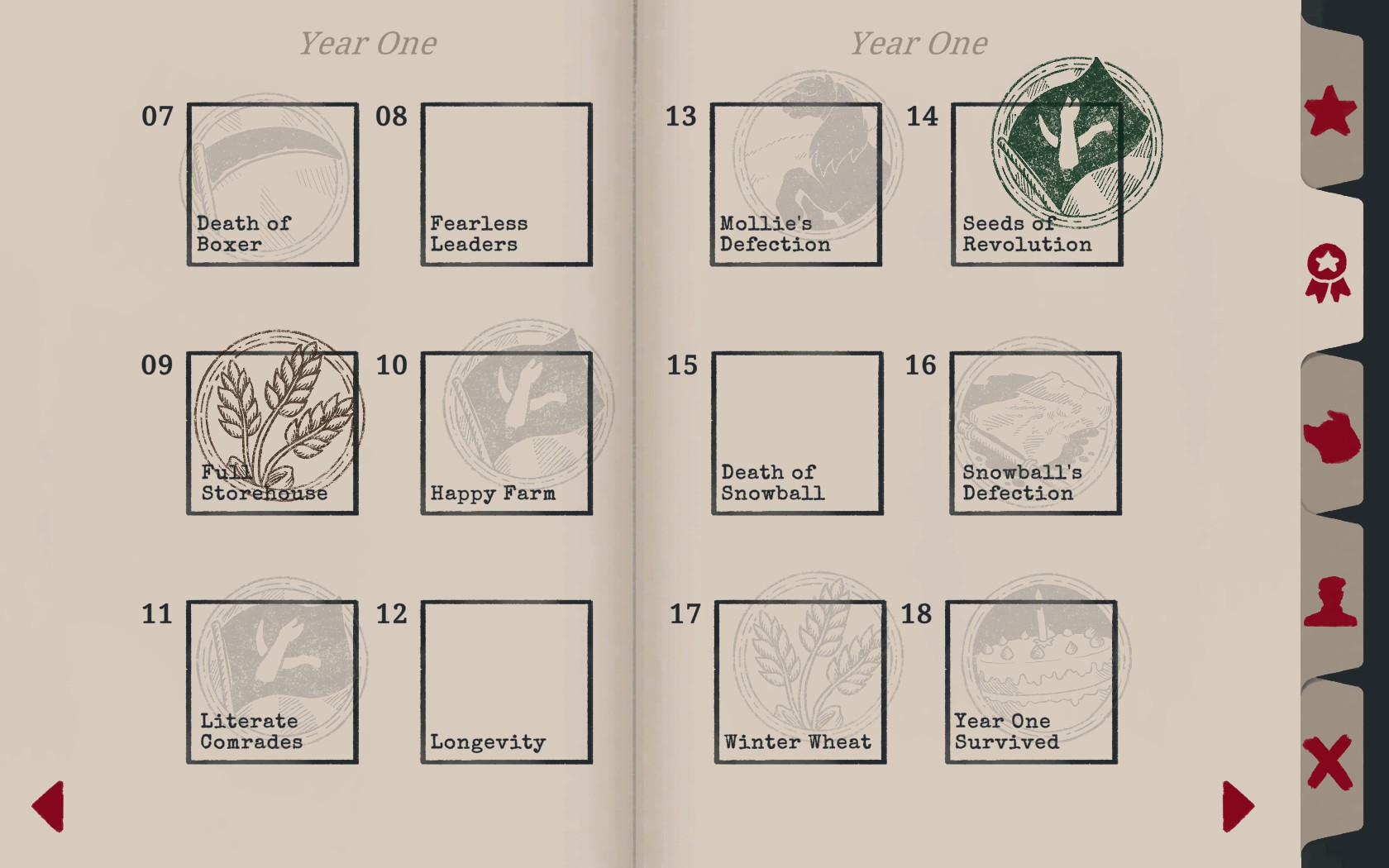The game Orwell’s Animal Farm stays true to its literary roots. Maybe too true, in fact.
Type: Single-Player
Genres: Adventure
Developer: Nerial
Publisher: The Dairymen
Release date: 10 Dec, 2020


Although it’s been several years since I last read Animal Farm in an English class, I still vividly remember the strong feelings its bleak ending line evoked for me. This may seem a strange reason to choose a game, but I was curious to see how the developers would adapt, expand upon, and possibly diverge from the source material. Orwell’s Animal Farm is described on its Steam store page as a text-based choose-your-own-adventure game, and I would say that description is fairly accurate. Although more complex in its gameplay than a visual novel, it’s still prone to the same limitations of that genre, and despite having multiple endings, in none of them do the developers stray as far from the book’s original ending as I would have liked.
Game Universe
As one might expect from the title of the game, the game universe is built around the political allegorical novella Animal Farm by George Orwell. Certain portions of the text heavily reflect actual content from the novel. However, with eight possible endings, the story is not merely a retelling of the book’s plot in game form, and it is possible for characters to have different outcomes in the game than their fates in the book. Unfortunately, it is clear from the achievement name for reaching every ending that all of the endings stick with the source material’s bleak tone, which I feel was a missed opportunity to more critically explore and evaluate the political systems under scrutiny in the novella.

Gameplay and Mechanics
There’s no tutorial or guidance on how to play, but I feel I was able to mostly suss it out through experimentation. Gameplay takes place in four locations: farm overview, barn meetings, battlefield, and inside the farmhouse. When on the farm overview, the cursor is a magnifying lens that pops up actions on any available character. Different actions will increase or decrease an individual animal’s health, the amount of food in storage, the level of Animalism, and/or the farm’s population. The color green is used for increasing effects and good health, while the color red is used for decreasing effects and poor health.
Despite being somewhat intuitive, I wish that the specifics were more clear-cut sometimes. For example, the number of actions that can be taken each turn is not consistent, and it would be nice to know how many actions I’m able to take before I start making decisions. Also, what does the Animalism level really mean? Does it simply mean the animals have a better attitude even when the situation sucks? Or does it also affect outcomes in other ways? Without a more clear way to track progress, after enough years have passed sometimes gameplay can start to drag a little because the same text starts to repeat as the seasons change. One playthrough to the longer endings takes about 2 hours, spanning over 7 in-game years.

Art Style and Audio
The art style is hand-drawn like classic English children’s storybook illustrations, but there’s not much in the way of motion animation due to the game being text-based and similar to visual novels in presentation. The soundtrack is orchestral, musically pleasing to the ear, and possesses enough variety in theme to not get repetitive. The only voice acting is the narration done by the storyteller; all character dialogue is text-based. There are also animal sound effects when a particular animal’s action is selected, and stamp sound effects when a stamp is made in the handbook. All of these simple effects combine into a charming whole that contributes to the story being told.
Achievements
There are five possible achievements, ranging from very simple to complete (e.g. it’s unlikely you’ll fail to click on the handbook at least once during a playthrough) to ones that will require multiple playthroughs to complete (e.g., collecting every stamp in the handbook and seeing every ending). You’re able to see your progress towards some of these achievements in the handbook (e.g., stamps earned previous playthroughs have a watermark version of the stamp) or in the stats screen at the end. I’m still working on some of the more complex achievements at the time of this review.

Technical Performance
I frequently encounter a bug when trying to launch the game where it says there is a missing executable. When I encounter this bug, the only solution has been to verify the integrity of the game’s files AND restart the computer. However, since this error doesn’t occur during gameplay I don’t find it a detriment to the overall experience.
Verdict
Priced $9.99 at the time of review, Orwell’s Animal Farm is an outstanding interactive exploration and tribute to the classic book, and I would highly recommend it to any Orwell superfan or student seeking to spice up their English class experience. For those who don’t fall into those two categories though, the game is probably better purchased at a discount.










